Rotator Cuff Tear
Table of Contents
What is a Rotator cuff tear?
A rotator cuff tear occurs when one or more of these tendons become damaged or completely torn. This can cause pain, weakness, and a limited range of motion in the affected arm. Rotator cuff tears can be caused by gradual wear and tear on the tendons as well as by sudden trauma or injury. These are common injuries, especially among athletes and older adults.
Treatment for a rotator cuff tear will depend on the severity of the injury and may involve rest, physical therapy, or surgery. Preventing a rotator cuff tear involves taking steps to reduce the risk of injury, such as avoiding repetitive overhead motions and maintaining good posture.
The rotator cuff
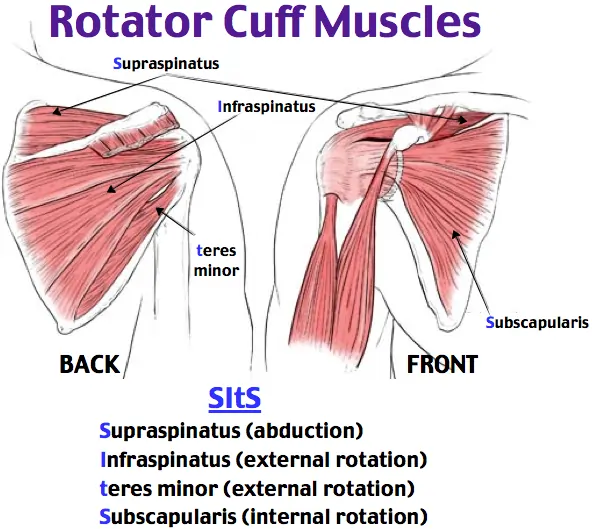
A rotator cuff is a group of four muscles and their corresponding tendons that connect the shoulder blade to the upper arm bone (humerus) and help stabilize and move the shoulder joint.
These are the supraspinatus, infraspinatus, teres minor, and subscapularis muscles. The tendons of the rotator cuff form a cuff-like structure around the head of the humerus, which helps keep the arm bone in place within the shoulder joint.
The rotator cuff is essential for the proper function of the shoulder joint, and injuries or tears to the rotator cuff can cause pain, weakness, and a limited range of motion in the affected arm.
Rotator cuff injuries are common, especially among athletes, older adults, and those who perform repetitive overhead motions.
What are the causes of Rotator cuff tear?
A rotator cuff injury can occur when one or more of these muscles or tendons are damaged or torn. Some common causes of rotator cuff tears include:
- Trauma or injury: A fall, a direct blow to the shoulder, or lifting a heavy object can cause a rotator cuff tear.
- Overuse or repetitive motion: Repetitive overhead motion, such as that used in sports like baseball, tennis, or swimming, or in occupations that require repetitive shoulder movements, can cause a rotator cuff tear.
- Age-related degeneration: As people age, the tendons in the rotator cuff can become less elastic and more susceptible to tearing.
- Poor posture: Poor posture can cause the shoulder blade to sit in an abnormal position, leading to overuse and an eventual rotator cuff tear.
- Genetics: Certain genetic factors may make some people more prone to rotator cuff tears.
- Pre-existing conditions: Other medical conditions, such as tendinitis or bursitis, can weaken the rotator cuff and increase the risk of a tear.
Symptoms of Rotator cuff tear:
The clinical features of a rotator cuff injury can vary depending on the severity of the tear, the location of the tear, and the individual’s age and overall health. However, some common clinical features of a rotator cuff tear include:
- Pain: Pain is usually the first symptom of a rotator cuff tear. The pain can be sudden or gradual and can range from mild to severe. It is often worse at night and can be aggravated by activities that involve lifting the arm or overhead movements.
- Weakness: Weakness in the affected shoulder is also a common symptom of a rotator cuff tear. This can make it difficult to lift objects or perform daily activities that require arm movement.
- Limited range of motion: A rotator cuff tear can also cause a limited range of motion in the shoulder joint. This can make it difficult to move the arm in certain directions, such as lifting it overhead.
- Clicking or popping sensation: Some people may experience a clicking or popping sensation in the shoulder joint when moving the arm.
- Shoulder instability: In severe cases, a rotator cuff tear can cause shoulder instability, which can make the shoulder joint feel loose or unstable.
- Muscle atrophy: Over time, a rotator cuff tear can cause the affected muscles to atrophy or shrink, leading to a visible loss of muscle mass in the shoulder.
If you are experiencing any of these symptoms, it is necessary to seek medical attention for an accurate diagnosis and appropriate treatment.
Classification
Rotator cuff injury can be classified based on their location, size, and severity. The most common classification system used for rotator cuff tears is the Ellman classification system, which categorizes tears into four types based on the depth of the tear:
1. Grade I (partial-thickness tear): This type of tear involves only the superficial layer of the rotator cuff tendon.
2. Grade II (partial-thickness tear with extension): This type of tear involves both the superficial layer and some deeper fibers of the rotator cuff tendon.
3. Grade III (full-thickness tear): This type of tear involves the complete thickness of the rotator cuff tendon, but the tear is not larger than 3 cm.
4. Grade IV (massive tear): This type of tear involves the complete thickness of the rotator cuff tendon and is larger than 3 cm.
In addition to the Ellman classification system, rotator cuff tears can also be classified based on their location and shape, including:
1. Supraspinatus tear: This type of tear involves the supraspinatus tendon, which is located on the top of the shoulder blade.
2. Infraspinatus tear: This type of tear involves the infraspinatus tendon, which is located on the back of the shoulder blade.
3. Subscapularis tear: This type of tear involves the subscapularis tendon, which is located on the front of the shoulder blade.
4. Combination tear: This type of tear involves more than one rotator cuff tendon.
The classification of a rotator cuff tear is important in determining the appropriate treatment plan, which may range from conservative measures such as physical therapy and rest to surgical repair or reconstruction.
Diagnosis
The diagnosis of a rotator cuff injury typically involves a combination of a physical examination, imaging tests, and a review of the patient’s medical history. Here are some common methods for diagnosing a rotator cuff injury:
• Physical examination: The doctor will typically examine the patient’s shoulder, looking for any signs of pain, weakness, or limited range of motion. They may also perform certain maneuvers, such as the “drop arm” test or the “empty can” test, to check for rotator cuff weakness.
• Imaging tests: Imaging tests, such as X-rays, ultrasounds, MRIs, or CT scans, can help to confirm the diagnosis of a rotator cuff tear. These tests can provide detailed images of the shoulder joint, allowing the doctor to see the extent of the tear and its location.
• Medical history: The doctor may ask the patient about their medical history, including any previous shoulder injuries or surgeries, as well as their occupation and physical activities.
• Arthroscopy: In some cases, the doctor may recommend arthroscopy, which is a minimally invasive surgical procedure that involves inserting a tiny camera into the shoulder joint to view the damage and repair the tear.
The combination of these diagnostic methods can help to accurately diagnose a rotator cuff tear and develop an appropriate treatment plan.
Treatment of Rotator cuff tear
The treatment of a rotator cuff injury depends on the severity of the tear, the patient’s age and overall health, and the patient’s lifestyle and functional goals. Some common treatment options include:
• Non-surgical treatment: Non-surgical treatment options for a rotator cuff tear include rest, ice, physical therapy, and pain medications. Physical therapy can help to strengthen the shoulder muscles and improve the range of motion, while pain medications can help to manage pain and inflammation.
• Surgery: Surgery may be recommended for larger or more severe tears or if non-surgical treatments are not effective. The type of surgery will depend on the size and location of the rotator cuff tear. Some common surgical procedures include arthroscopic repair, open repair, and patch augmentation.
• Injection therapy: Injection therapy, such as corticosteroid injections or platelet-rich plasma (PRP) injections, may be recommended to help reduce pain and inflammation and promote healing.
• Lifestyle modifications: Making lifestyle modifications, such as avoiding activities that aggravate the shoulder, maintaining good posture, and avoiding smoking, can help to prevent further damage and promote healing.
The most appropriate treatment plan for a rotator cuff tear will depend on several factors and should be discussed with a healthcare professional. Prompt treatment can help to reduce pain, improve function, and prevent further damage to the shoulder.
Physiotherapy Treatment in Rotator Cuff Tear
Physiotherapy is an essential part of the management of a rotator cuff tear. The treatment will depend on the severity of the tear and the phase of healing. Here’s an overview of the physiotherapy management for a rotator cuff tear in each phase of healing:
- Acute phase: The acute phase lasts for the first 4–6 weeks after the injury. During this phase, the focus is on reducing pain and inflammation and protecting the healing tissue.
• Rest and ice: Resting the shoulder and applying ice to the area can help reduce pain and swelling.
• Immobilization: immobilizing the shoulder with a sling or brace may be recommended to protect the healing tissue.
• Gentle range-of-motion exercises: gentle range-of-motion exercises may be prescribed to maintain mobility in the shoulder joint without further damaging the healing tissue.
• Education: Education on proper posture and activities to avoid further damage to the rotator cuff - Subacute phase: The subacute phase lasts from 6 to 12 weeks after the injury. During this phase, the focus is on improving range of motion and strength.
• Stretching: stretching exercises to improve the range of motion and flexibility of the shoulder joint
• Strengthening: progressive strengthening exercises to improve the strength and stability of the rotator cuff muscles.
• Manual therapy: Manual therapy techniques, such as massage or joint mobilization, can improve joint mobility and decrease pain.
• Modalities: Modalities like heat or ice can be used to reduce pain and inflammation. - Chronic phase: The chronic phase begins after 12 weeks of injury, where the focus is on functional activities and returning to normal activities of daily living.
• Advanced strengthening exercises: advanced strengthening exercises to improve the strength and endurance of the rotator cuff muscles.
• Functional activities: activities that mimic daily activities and movements specific to the individual’s needs and occupation.
• Sport-specific activities: Gradually returning to sport-specific activities to ensure a safe return to sports or physical activities
It is important to work with a physiotherapist who can design a personalized rehabilitation program tailored to your specific needs and injury. A comprehensive rehabilitation program will help you recover faster and return to normal activities.
How to Prevent Rotator cuff tear?
Rotator cuff injury can be prevented by taking care of your shoulder joint and strengthening the muscles around it. Here are some tips to prevent rotator cuff tears:
- Exercise regularly: Regular exercise can help keep the muscles around the shoulder joint strong and healthy. Focus on exercises that strengthen the rotator cuff muscles, such as external and internal rotations and shoulder raises.
- Use proper technique: When lifting weights or performing any other activity that puts stress on the shoulder joint, make sure to use proper technique. This will help prevent injuries and strain on the rotator cuff.
- Warm-up and stretch before exercise: It’s important to warm-up and stretch before exercising to reduce the risk of injury. This will also help increase blood flow to the muscles and improve flexibility.
- Avoid repetitive motions: Repetitive overhead motions can put a lot of strain on the rotator cuff muscles. If you must perform these motions, take frequent breaks and stretch in between.
- Maintain good posture: Poor posture can put unnecessary stress on the shoulder joint and lead to rotator cuff tears. Sit and stand up with your back and shoulders straight, and avoid slouching.
- Listen to your body: If you experience pain or discomfort in your shoulder, stop the activity and rest. Continuing to exercise through pain can increase your risk of injury.
- Get regular check-ups: If you have a history of shoulder problems or are at a higher risk for rotator cuff tears, it’s important to see a doctor regularly. They can monitor your shoulder health and recommend any necessary preventative measures.
Conclusion
A rotator cuff tear can be a painful and debilitating injury, but with the right treatment and prevention measures, it can be managed effectively. If you are experiencing shoulder pain or weakness, it’s important to seek medical attention to receive a proper diagnosis and treatment plan.
FAQs
Does it rotator cuff tear heal on its own?
Small rotator cuff tears may heal on their own with appropriate rest and rehabilitation. However, larger tears typically do not heal on their own and may require medical intervention. The size and location of the tear, as well as the patient’s age and overall health, are important factors in determining whether a tear can heal on its own. In general, smaller tears that involve less than 25% of the tendon may have a chance to heal on their own with conservative treatment, such as rest, physical therapy, and anti-inflammatory medication.
However, larger tears or tears that involve significant tendon retraction typically do not heal on their own and may require surgical repair. It is important to consult a doctor if you suspect a rotator cuff tear, as early diagnosis and treatment can help prevent further damage and improve outcomes.Which are two warning signs of a rotator cuff tear?
There are several warning signs of a rotator cuff tear, but here are two common ones to look out for:
Pain: Pain is the most common symptom of a rotator cuff tear. You may feel a dull ache in the shoulder that may worsen at night or when lifting your arm. The pain may also be more intense when reaching overhead, behind your back, or to the side.
Weakness: Weakness in the shoulder or arm can be a warning sign of a rotator cuff tear. You may have difficulty lifting or carrying objects, and your arm may feel weak or tired. You may also notice a decrease in your overall shoulder strength.
If you are experiencing any of these warning signs, it is important to see a doctor for a proper diagnosis and treatment plan. Rotator cuff tears can worsen over time if left untreated, and prompt medical attention can help prevent further damage and speed up the healing process.What is the best way to treat a rotator cuff tear?
The best way to treat a rotator cuff tear depends on the severity of the tear, your age, overall health, and activity level. Here are some common treatments for rotator cuff tears:
• Rest and modification of activities: Resting the affected shoulder and avoiding activities that aggravate the injury can help reduce pain and prevent further damage.
• Physical therapy: A physical therapist can help you perform exercises to strengthen the muscles around the shoulder joint and improve range of motion.
• Medications: Over-the-counter pain medications like acetaminophen or nonsteroidal anti-inflammatory drugs (NSAIDs) can help reduce pain and inflammation.
• Corticosteroid injections: Injections of corticosteroid medication can help reduce inflammation and pain.
• Surgery: For severe or complete tears, surgery may be necessary to repair the tendon or reattach it to the bone. Surgery may also be recommended if conservative treatments do not improve symptoms.
It is important to consult a doctor for an accurate diagnosis and to determine the best course of treatment for your specific injury. Following the recommended treatment plan and performing the prescribed exercises can help improve symptoms and prevent further injury.What occurs if you ignore a rotator cuff tear?
Ignoring a rotator cuff tear can worsen symptoms and have long-term consequences.The rotator cuff is a group of muscles and tendons that attach to the shoulder joint and allow for movement and stability. If a rotator cuff tear goes untreated, it can cause:
• Pain
• Weakness
• Loss of function
• Tendinitis or bursitis
• Arthritis
• Frozen shoulder
In some cases, a rotator cuff tear may heal on its own, especially if it is a partial tear or a small tear. However, most larger or complete tears will require treatment, such as physical therapy, corticosteroid injections, or surgery, to prevent further damage and restore function. It is important to consult a doctor if you suspect you have a rotator cuff tear to determine the appropriate course of treatment.What are the 3 types of rotator cuff repairs?
The three types of rotator cuff repair are:
Open repair: In this type of surgery, a large incision is made over the shoulder to access the damaged rotator cuff. The surgeon then repairs the cuff by suturing it back to the bone.
Arthroscopic repair: This is a minimally invasive surgery that involves making small incisions around the shoulder joint. The surgeon uses a small camera and specialized instruments to repair the rotator cuff.
Mini-open repair: This is a hybrid of open and arthroscopic techniques. It involves making a small incision to access the damaged rotator cuff and then using arthroscopic instruments to repair the cuff. This technique allows the surgeon to have a better view of the rotator cuff while still maintaining the benefits of a minimally invasive approach.

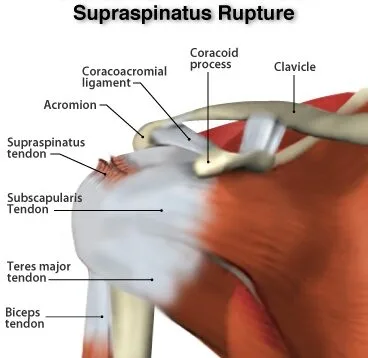
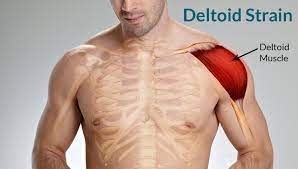
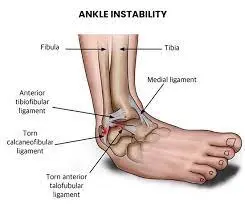
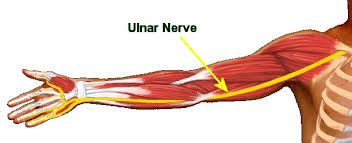

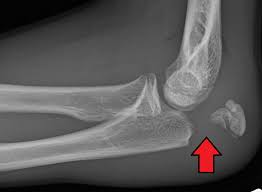
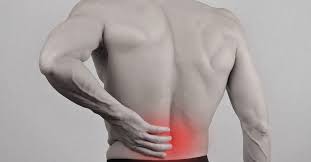
4 Comments